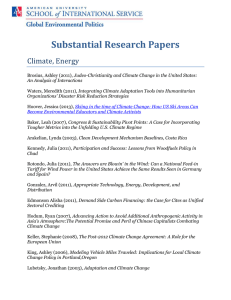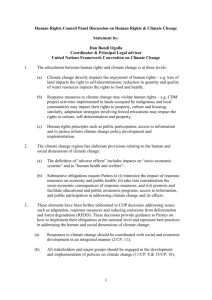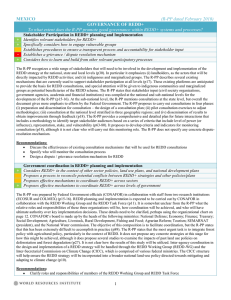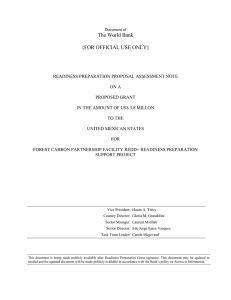Analysis table of what have been taken or not into consideration
advertisement
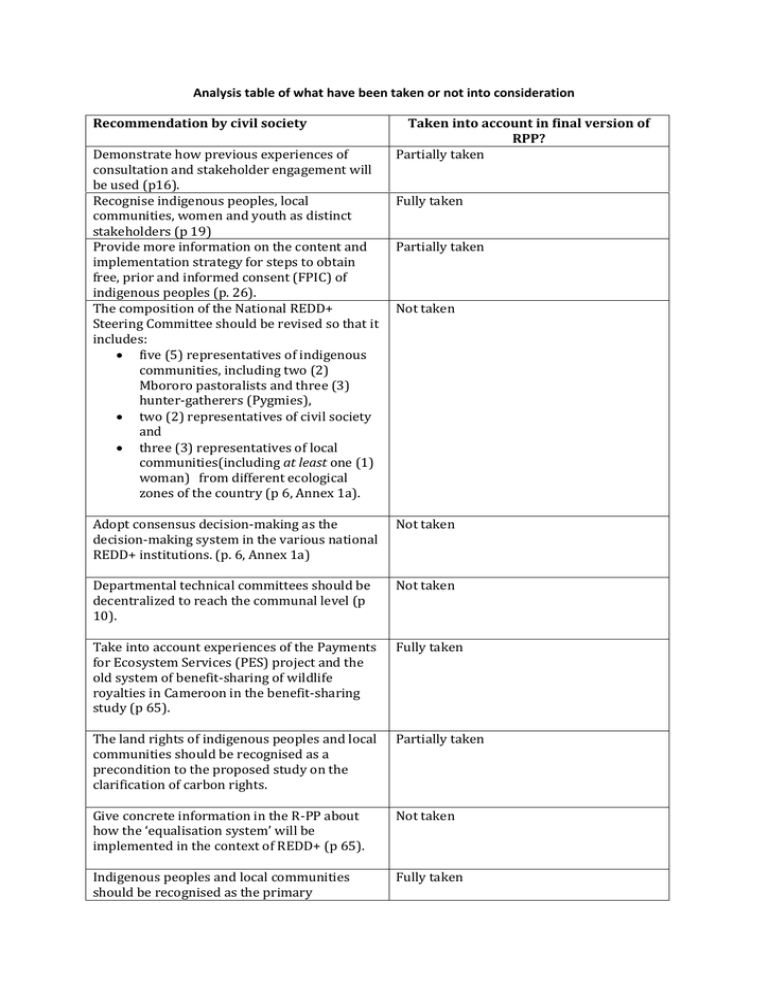
Analysis table of what have been taken or not into consideration Recommendation by civil society Demonstrate how previous experiences of consultation and stakeholder engagement will be used (p16). Recognise indigenous peoples, local communities, women and youth as distinct stakeholders (p 19) Provide more information on the content and implementation strategy for steps to obtain free, prior and informed consent (FPIC) of indigenous peoples (p. 26). The composition of the National REDD+ Steering Committee should be revised so that it includes: five (5) representatives of indigenous communities, including two (2) Mbororo pastoralists and three (3) hunter-gatherers (Pygmies), two (2) representatives of civil society and three (3) representatives of local communities(including at least one (1) woman) from different ecological zones of the country (p 6, Annex 1a). Taken into account in final version of RPP? Partially taken Fully taken Partially taken Not taken Adopt consensus decision-making as the decision-making system in the various national REDD+ institutions. (p. 6, Annex 1a) Not taken Departmental technical committees should be decentralized to reach the communal level (p 10). Not taken Take into account experiences of the Payments for Ecosystem Services (PES) project and the old system of benefit-sharing of wildlife royalties in Cameroon in the benefit-sharing study (p 65). Fully taken The land rights of indigenous peoples and local communities should be recognised as a precondition to the proposed study on the clarification of carbon rights. Partially taken Give concrete information in the R-PP about how the ‘equalisation system’ will be implemented in the context of REDD+ (p 65). Not taken Indigenous peoples and local communities should be recognised as the primary Fully taken beneficiaries of potential benefits of REDD+ (p 66). Limit the role of the private sector (agroindustrial, mining and timber companies and industrialists) so that they are not major beneficiaries of REDD+ profits (p 66). Not taken Include the possibility of a neutral arbitration if consensus is not reached in conflict management mechanisms at the local level (p. 64). Partially taken Develop and include a draft terms of reference for the study on the drivers of deforestation and forest degradation (Appendix 4a) Not taken Clearly describe how the SESA will be implemented (p 74). Partially taken Include provision for capacity building of civil society actors, local communities and indigenous peoples as part of the SESA process, not only employees of Ministries (p 74). Fully taken Clarify responsibilities for each strategy options related to sectoral investments (for example, agriculture, livestock) and the coherence between the strategic options and other sectoral policies and programs such as the FLEGT (p 46-48). Fully taken Describe in the R-PP how REDD components fit with current legislative review processes related to forest governance, land tenure and land use planning (p 53-54). Fully taken Include the text: "The customary rights of established indigenous communities to their lands shall be recognised”. Such an action will have significant positive impacts on the reduction of deforestation and thus ensure efficiency in the REDD+ process (p 52). Not taken
